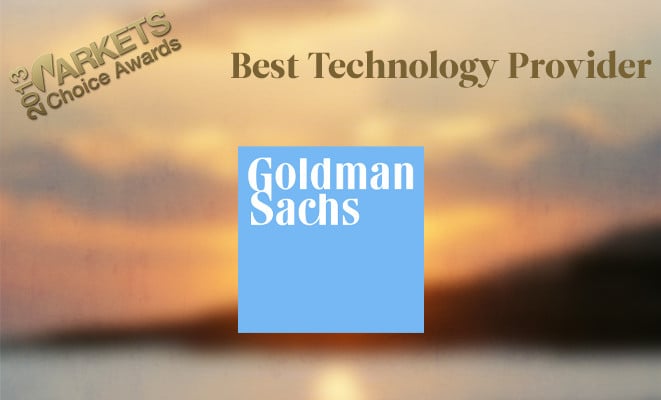For an institutional investor, hedge fund, or proprietary trader, there is procuring the necessary technology products and systems on a piecemeal, provider-by-provider basis, and there is working with a full-service provider. For the latter option, Goldman Sachs is as good as it gets.
“Technology is at the heart of everything we do in electronic trading and a key part of our value proposition,” said Todd Lopez, co-head of Americas Sales at Goldman Sachs Electronic Trading. “The technology we use to deliver products to clients, how we leverage technology to service clients, and how we make technology available for clients are all key components of our business.”
 Todd Lopez, co-head of Americas sales at Goldman Sachs Electronic Trading
Todd Lopez, co-head of Americas sales at Goldman Sachs Electronic Trading
As one of the biggest traders on Wall Street, Goldman has institutional experience in bringing in and developing technology for its own business. “We are huge consumers of technology within our own firm,” Lopez told Markets Media. “We have learned a lot from deploying technology internally to improve our own processes and workflows, and we have tried to extend this to our clients directly.”
As might be expected from a unit of a global firm, Goldman Sachs Electronic Trading supports a wide range of traders around the world. Asset classes serviced include equities, derivatives, fixed income and foreign exchange, for traders across Asia, Europe or the Americas.
GSET’s product suite includes the REDIPlus execution management system, an extensive FIX connectivity network, multi-asset algorithms, and the Sigma X dark pool. Beyond its proprietary products, Goldman prides itself on its service, which includes setting a client up with technology from a third-party vendor if that’s indicated.
First impressions are critical, Lopez noted.
“Making the experience as frictionless as possible for clients from the start is a key aspect to delivering technology successfully,” he said. “People form habits quickly and if your product is difficult to use up front, your chances of long-term success are very small.”
For GSET clients, the end result can be soup-to-nuts, fully integrated trading functionality, including clearing, prime brokerage, commission-management services, and outsourced trading infrastructure.
For GSET, 2012 initiatives included a new algorithm designed to find liquidity in often-illiquid smaller-capitalization equity names; expansion in Brazil; and, reportedly, the development of a new corporate bond-trading system, called GSessions. In 2011, the company launched BlockStrike, a block-liquidity trading strategy for North American stocks, and expanded its capabilities in ETFs, commodities, and Brazilian futures.
This year, GSET will advance quality control across borders. Said Lopez, “in 2013 we will continue to focus on our global footprint, and a key part of that mandate will be offering products and services in a much more streamlined and consistent way across the globe.”
“We are huge consumers of technology within our own firm. We have learned a lot from deploying technology internally to improve our own processes and workflows, and we have tried to extend this to our clients directly.” Todd Lopez, co-head of Americas sales at Goldman Sachs Electronic Trading
One major consideration for GSET, and all sell-side firms that equip buy-side clients to trade, is tightening financial regulation in the U.S. and Europe. A trading-technology system may be cutting-edge, but it also needs to ensure compliance and capital efficiency within the rules.
“We’ll adapt as (clients) adapt,” Goldman Sachs Chief Financial Officer Harvey Schwartz said Jan. 16 on a conference call to discuss fourth-quarter earnings. “When we see the rules and will work with our clients, we’ll work with them as closely as possible to adapt and make sure that their needs are fulfilled.”














